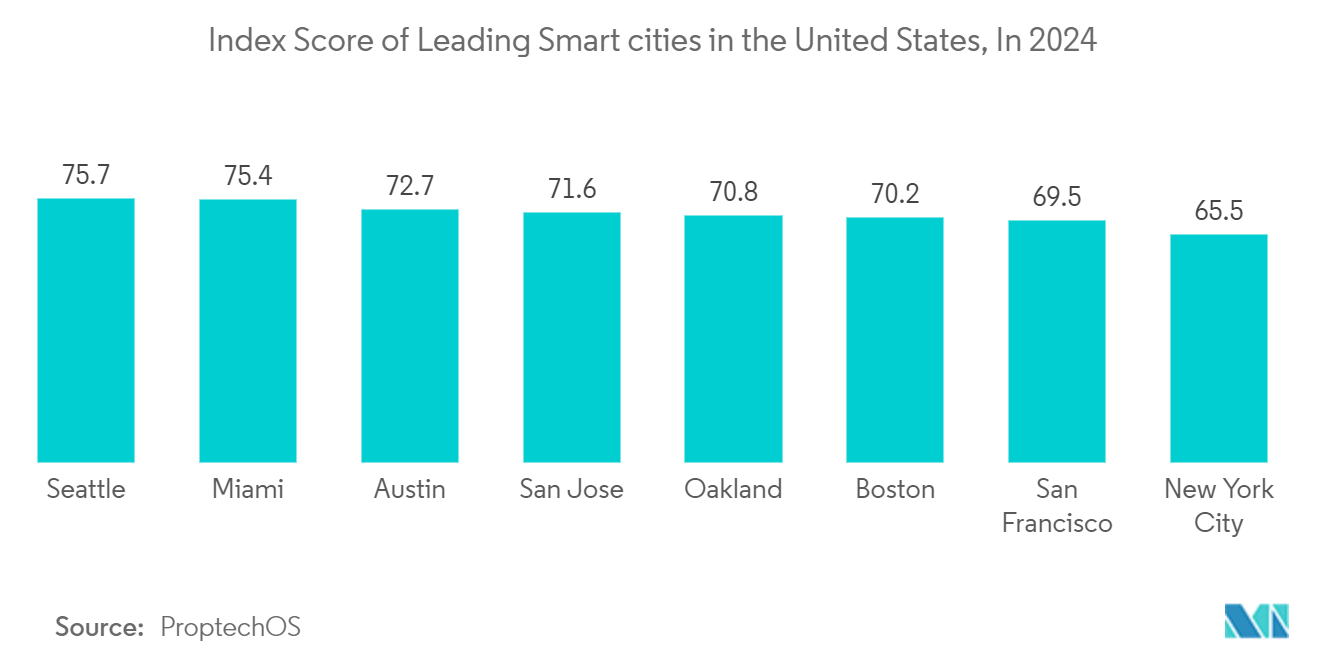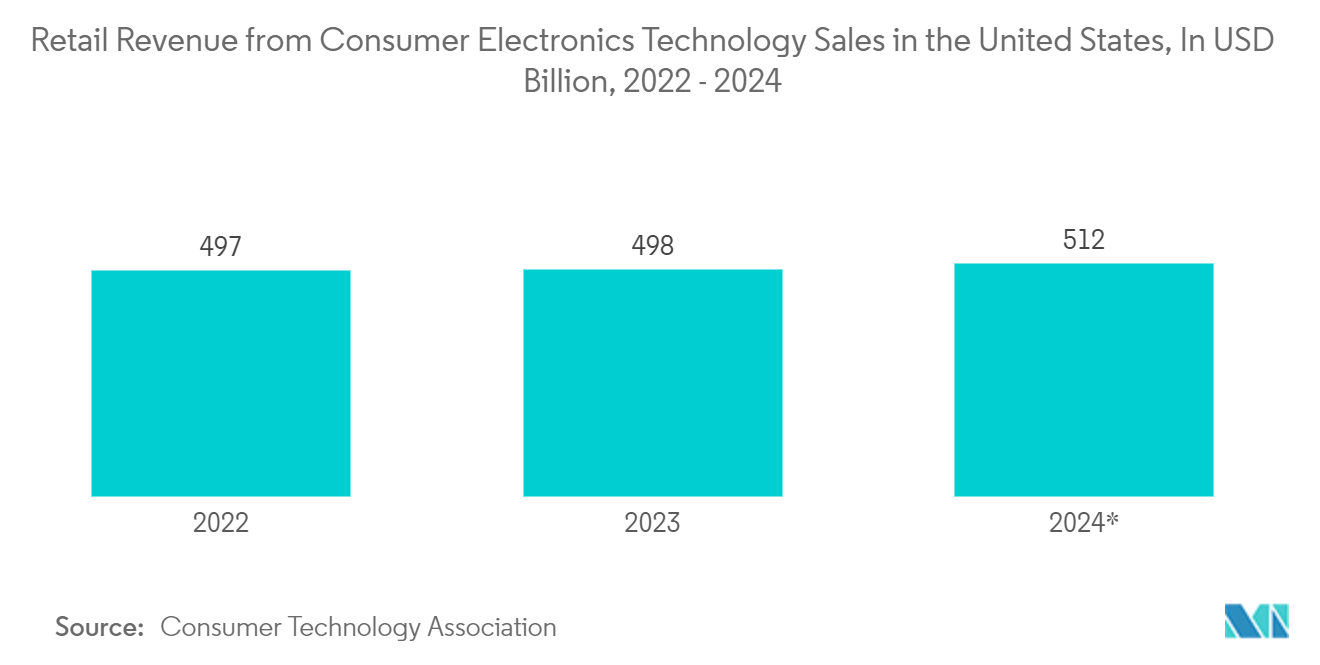Market Trends of United States Sensors Industry
Environmental Sensors is Expected to Witness a Significant Growth
- Environmental sensors find diverse applications across environmental protection, agriculture, meteorology, and industry. In environmental protection, they play a crucial role in detecting air quality, pollutant emissions, and other environmental parameters, aiding in timely environmental assessments and formulating effective countermeasures. These sensors come in various types, each tailored to detect specific environmental parameters. These sensors operate on diverse measurement principles, including the thermoelectric effect and resistive, capacitive, and photoelectric technologies.
- Further, as climate change impacts become increasingly evident, the focus on monitoring environmental conditions and trends has intensified. Environmental sensors are crucial in collecting air quality, water quality, temperature, and precipitation data. This data is essential for understanding and effectively addressing environmental challenges. Moreover, the US government has enacted several regulations and policies to curb pollution, safeguard natural resources, and uphold environmental integrity. Environmental sensors are pivotal in ongoing monitoring to ensure adherence and gauge advancements.
- In addition, in February 2024, the Biden-Harris Administration announced a substantial move by the US Environmental Protection Agency (EPA), setting aside close to USD 83 million to revamp the nation's air quality monitoring. About USD 2 million is designated for deploying and managing air quality sensors in underprivileged communities. This initiative marks a significant financial commitment and underscores a strategic shift, empowering state, local, territorial, and Tribal agencies to collaborate more closely with communities near air pollution sources.
- Furthermore, the regional agencies are emphasizing the creation of awareness of the use of environmental sensors for environmental quality monitoring. For instance, the United States Department of Commerce's National Institute of Standards and Technology is organizing a workshop for a gap analysis. The aim is to evaluate the current capabilities of sensors in measuring and assessing environmental conditions at local, regional, and global scales. This includes monitoring changes over time, especially in response to natural and human-induced influences.
- Moreover, environmental sensors play a pivotal role as cities and municipalities strive to embrace technology for smarter infrastructure and services. They offer crucial data, enabling energy consumption and waste management, ultimately enhancing sustainability. Additionally, the country is one of the fastest adopters of smart city initiatives. According to the Smart City Index 2024 report published by ProptechOS, Seattle has the highest index score of 75.7, considering parameters like connectivity & infrastructure, green infrastructure, and tech job market.

Consumer Electronics is Expected to Hold a Significant Market Share
- Consumer electronics is expected to hold a significant market share in the United States Sensors market. The increased sales of consumer electronics drive demand for various types of sensors such as temperature, pressure, motion sensors, and among others. Motion sensors, such as accelerometers, are valuable in monitoring a device's movement, including tilt, shake, rotation, and swing.
- The United States is home to popular retailers such as Walmart, Amazon, Apple, Lenovo, Dell, etc. The environment is conducive to the growth of the consumer electronics industry, as these devices rely on sensors that offer higher processing power, improved energy efficiency, and enhanced functionality.
- Smartphones utilize accelerometers to establish their position. Most consumer electronics, such as game consoles, mobile phones, laptops, microwaves, and refrigerators, operate with temperature, proximity, motion sensors, etc. The high demand for these devices is a crucial factor contributing to the significant growth of the studied market.
- The adoption of NFC sensors in smartphones is a growing trend in the country. NFC, one of the fastest-growing smartphone technologies, is gaining momentum thanks to the increasing prevalence of cashless transactions. These sensors enable quick communication between devices by transmitting encrypted data, including payment details, and many upcoming smartphones are already equipped with NFC capabilities. The rise in popularity of NFC technology can largely be attributed to mobile payment systems like Apple Pay and Samsung Pay. Consequently, smartphone applications will necessitate the integration of sensors to keep up with these advancements.
- Sensing devices are used in more smart home applications as smart structures gain popularity. The demand for sensors is expected to increase due to the growing popularity of smart consumer electronics, IoT devices for smart homes, and technological advancements and innovations. Additionally, the increasing use of wireless technologies, propelling the market for smart consumer electronics, is anticipated to open up new market opportunities for sensors.


